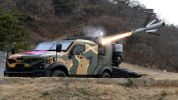It can provide infantry support but it's the wrong tool for the job if you are up against other tanks. For one thing, the chassis can't stabilize well enough to fire the cannon when it isn't pointed forward. So if you have to shoot uphill you may roll.
Source: An OCS classmate that hated his MGS with a passion.
That's the feedback I've gotten from my friends that served in them.
It's hard to really grasp the differences between Russian/Soviet artillery and ours. One thing to point out is that the US has computers and tables that allow us to calculated for MET (environmental changes that effect when the round falls) but we don't always use it. A mentor was a battery commander in OIF 1 and they shot cold stick, that is without adjusting for MET. It's fast and accurate enough for what he was doing.
The other thing that you have to take into account is organization and how that effects artillery use. The US has computer programs that can transmit a fire mission from the observer to the firing piece without any intervention. This is great with radar. The radar catches an incoming round on the ascending branch (while it is going up) calculates a point of origin and sends a fire mission to Brigade which routes it down to Battalion, Battery, Platoon and out to the shooter (cannon or rocket) without any human input.
Return fire timelines using that system are measured in seconds, not minutes.
Most Russian rocket launchers, in contrast, have a fire direction system that doesn't use HF/VHF/VSAT to send missions directly to the shooter. They have to type them in by hand. Shooting rockets and missiles off grids written on 3x5 cards works really well when you are shooting pre-ATO fires or something planned, but it doesn't work for a time sensitive target, a moving target or for return fire. In that regard the US is much more flexible than the Russians. They mass and they plan ahead. Their system works pretty well within its limitations.
Finally, a caveat. When the Army went to the BCT system they got rid of DIVARTY. I don't know the Navy well enough to make a good analogy but let me try. Imagine if every pilot were suddenly ship's company and had to explain and justify what they needed to maintain currency and prepare for war.
The result (though DIVARTY has been brought back) is a Field Artillery branch that hasn't trained itself how to perform key tasks in nearly 20 years.
Source: Me, Army 13A Field Artillery Officer for five years (2010-2014). HIMARS and MLRS.

